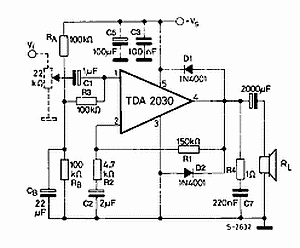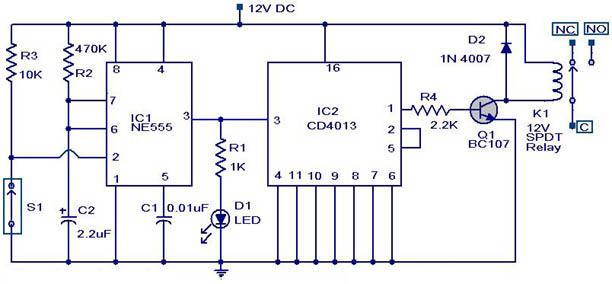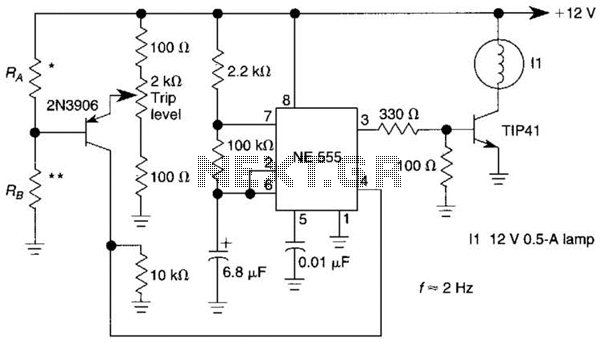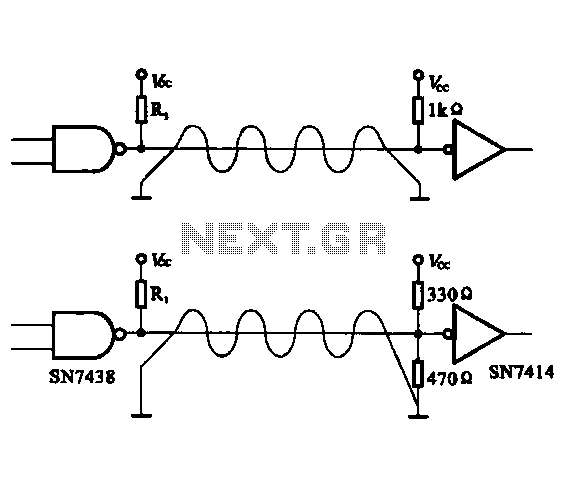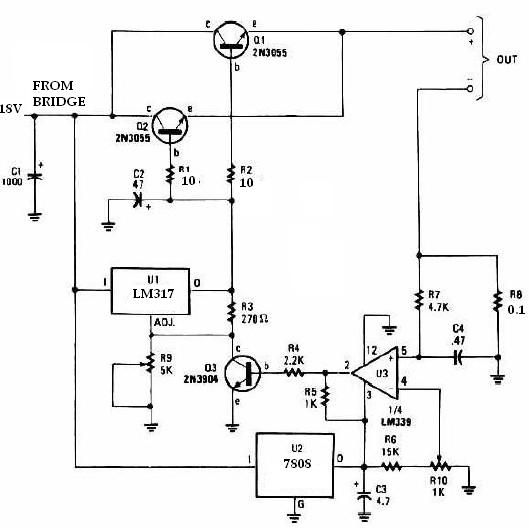
20W + 20W stereo amplifier circuit diagram
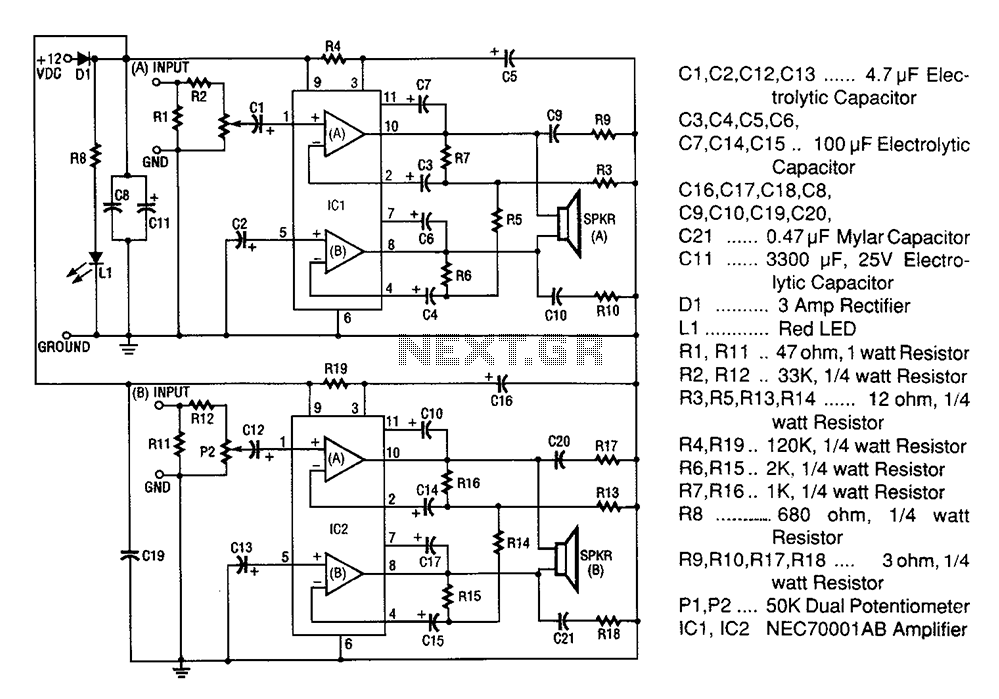
A 20W + 20W stereo amplifier comprises two independent 20-watt RMS amplifiers configured in a bridge arrangement. The input source is connected to a shunt voltage amplifier through resistors R1, R2, and potentiometer P1. Resistor R1 provides load resistance between the signal source and ground. Resistor R2 and potentiometer P1 are used to bind the signal. The signal is then passed through capacitor C1 to the internal amplifier IC1 at the (+) input (pin 1), where it is significantly amplified. Capacitors C2 and another capacitor connected to the internal amplifier IC1 (+) input are grounded.
The 20W + 20W stereo amplifier operates by utilizing two distinct amplification channels, allowing for a robust audio output in a compact design. The bridge configuration of the amplifiers enables the combination of their output power, effectively doubling the power delivered to the load, which typically consists of speakers.
The input stage incorporates a shunt voltage amplifier, which is critical for signal conditioning. Resistor R1 serves as a load resistor to establish a reference point between the signal source and ground, ensuring that the input signal is appropriately biased for optimal performance. Resistor R2, in conjunction with potentiometer P1, allows for fine-tuning of the signal level before it is processed by the amplifier. This configuration is essential for managing the gain and ensuring that the input signal does not exceed the operational limits of the amplifier.
Capacitor C1 plays a vital role in coupling the input signal to the amplifier's internal circuitry. It blocks any DC component of the input signal while allowing the AC audio signal to pass through, thus protecting the amplifier from potential damage due to unwanted DC offsets. The internal amplifier IC1 amplifies the incoming audio signal at its (+) input (pin 1), significantly increasing the signal strength for further processing.
Capacitor C2, along with an additional capacitor connected to the ground, serves as a bypass capacitor, providing stability to the amplifier's power supply. This configuration helps to filter out noise and ripple from the power supply, ensuring that the amplifier operates efficiently and produces clean audio output. The overall design emphasizes the importance of component selection and layout in achieving high fidelity and reliable performance in audio amplification applications.20W + 20W of stereo amplifier consists of two complete, independent 20-watt RMS amplifier in bridge. The input source is brought into the shunt voltage amplifier, it is by R1, R2 and P1 thereof. Resistor R1 between the signal source and the ground provide a load resistance. Resistor R2 and potentiometer P1 binding signal. Signal through the same capacitor C1 and IC1 internal amplifier (+) input (pin 1) combined, where the signal is increased a lot. Capacitors C2 and other (B) of the internal amplifier IC1 (+) input to ground.
The 20W + 20W stereo amplifier operates by utilizing two distinct amplification channels, allowing for a robust audio output in a compact design. The bridge configuration of the amplifiers enables the combination of their output power, effectively doubling the power delivered to the load, which typically consists of speakers.
The input stage incorporates a shunt voltage amplifier, which is critical for signal conditioning. Resistor R1 serves as a load resistor to establish a reference point between the signal source and ground, ensuring that the input signal is appropriately biased for optimal performance. Resistor R2, in conjunction with potentiometer P1, allows for fine-tuning of the signal level before it is processed by the amplifier. This configuration is essential for managing the gain and ensuring that the input signal does not exceed the operational limits of the amplifier.
Capacitor C1 plays a vital role in coupling the input signal to the amplifier's internal circuitry. It blocks any DC component of the input signal while allowing the AC audio signal to pass through, thus protecting the amplifier from potential damage due to unwanted DC offsets. The internal amplifier IC1 amplifies the incoming audio signal at its (+) input (pin 1), significantly increasing the signal strength for further processing.
Capacitor C2, along with an additional capacitor connected to the ground, serves as a bypass capacitor, providing stability to the amplifier's power supply. This configuration helps to filter out noise and ripple from the power supply, ensuring that the amplifier operates efficiently and produces clean audio output. The overall design emphasizes the importance of component selection and layout in achieving high fidelity and reliable performance in audio amplification applications.20W + 20W of stereo amplifier consists of two complete, independent 20-watt RMS amplifier in bridge. The input source is brought into the shunt voltage amplifier, it is by R1, R2 and P1 thereof. Resistor R1 between the signal source and the ground provide a load resistance. Resistor R2 and potentiometer P1 binding signal. Signal through the same capacitor C1 and IC1 internal amplifier (+) input (pin 1) combined, where the signal is increased a lot. Capacitors C2 and other (B) of the internal amplifier IC1 (+) input to ground.
